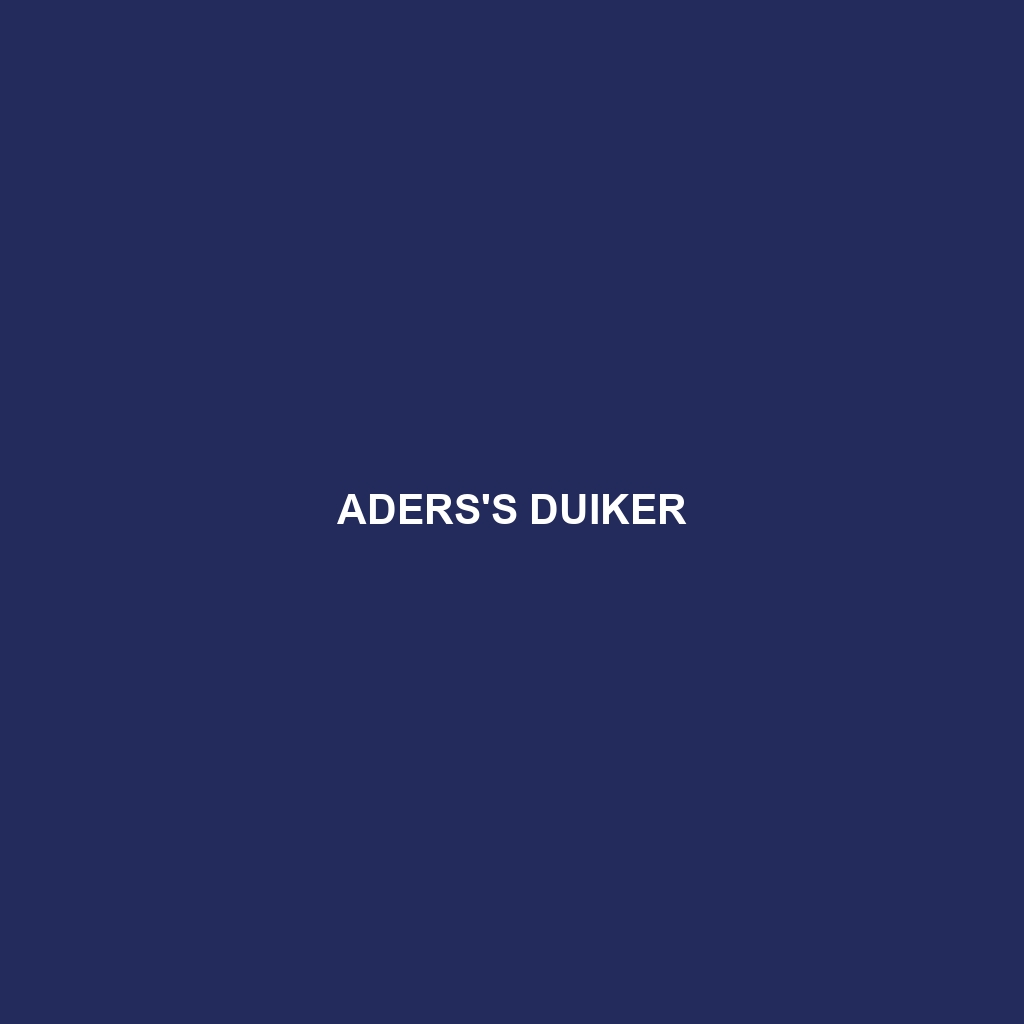Abbott’s Duiker
Common Name: Abbott’s Duiker
Scientific Name: Cephalophus abbotii
Habitat
Abbott’s Duiker is primarily found in the dense, humid forests of West and Central Africa, particularly in countries such as Cameroon, Gabon, and the Republic of the Congo. These elusive antelopes thrive in lowland rainforests and are often associated with areas rich in underbrush, which provides cover and browsing opportunities.
Physical Characteristics
This medium-sized antelope stands about 50-70 cm (20-28 inches) at the shoulder and weighs between 30-50 kg (66-110 lbs). Abbott’s Duiker is distinguished by its striking dark brown coat, complemented by a lighter underbelly. Its long legs and slender body are adapted for swift movement through the forest undergrowth. Notable features include small, pointed ears and a characteristic white stripe that runs along the face, aiding in camouflage among the foliage.
Behavior
Abbott’s Duiker is primarily a solitary animal, although they are occasionally seen in pairs. These animals are crepuscular, being most active during dawn and dusk. They are known for their quiet and cautious approach to foraging, using their keen senses to detect potential predators. Additionally, they often depend on their stealth and agility to escape threats.
Diet
The diet of Abbott’s Duiker primarily consists of leaves, fruits, and tender shoots, with a preference for herbaceous plants in their forest habitat. This browser is known for its selective feeding habits, which allow it to sustain itself on the rich plant diversity available in the tropical forests. Their unique diet plays a significant role in the regeneration of plant species within their ecosystem.
Reproduction
Abbott’s Duikers have a polygynous mating system, where one male mates with multiple females. The breeding season can vary, but typically, gestation lasts for about 7-8 months, resulting in a single calf, which is hidden by the mother in dense underbrush for protection from predators after birth. The young are weaned at around three months old and become independent within a year.
Conservation Status
Currently, Abbott’s Duiker is classified as Vulnerable on the IUCN Red List due to habitat loss and fragmentation, primarily driven by logging and agricultural expansion. Conservation efforts are crucial to protect this species and its habitat, ensuring its survival in the wild.
Interesting Facts
Abbott’s Duikers have a remarkable ability to remain hidden, often relying on their natural camouflage and silent movements to evade predators. Their shy nature makes them a rare sight in the wild, contributing to their mystique and the growing interest among wildlife enthusiasts and researchers alike.
Role in Ecosystem
As important herbivores, Abbott’s Duikers play a crucial role in their ecosystem by helping to maintain the balance of plant species in their forest habitat. Their browsing habits promote plant diversity and support the overall health of the forest ecosystem, showcasing their significance in maintaining ecological integrity.
